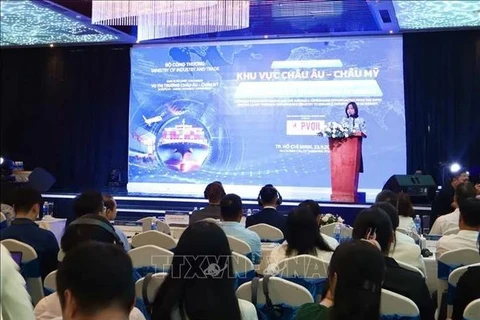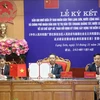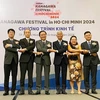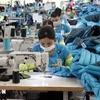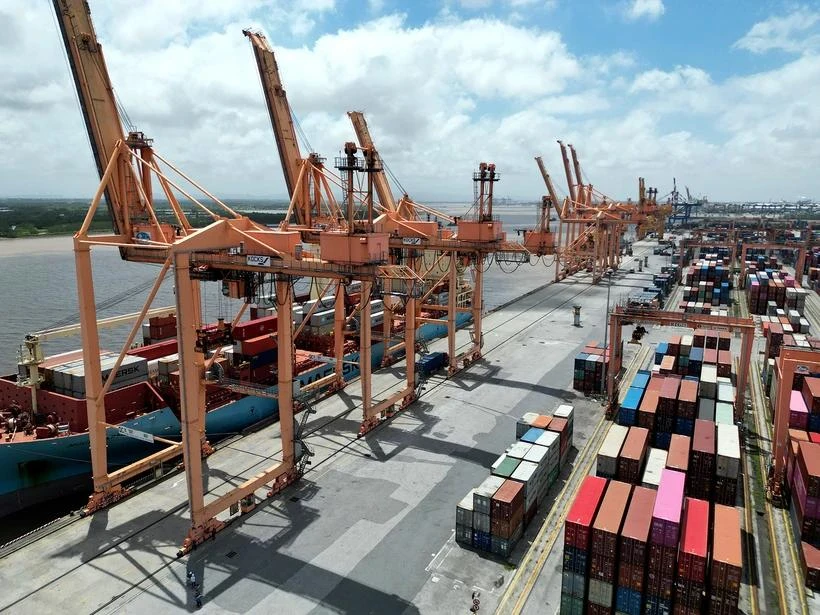
Hanoi (VNA) - Experts predict that Vietnam's export activities will flourish in the remaining months of this year, as businesses capitalise on market opportunities to enhance consumption and contribute to overall economic growth.
According to the Ministry of Industry and Trade, Vietnam exported approximately 265 billion USD worth of goods during the January-August period, marking a remarkable 15.8% increase compared to the same period last year.
By the end of August, 30 types of goods had achieved export turnover exceeding 1 billion USD each, representing 92.3% of total exports. Among these, six surpassed 10 billion USD, accounting for 62.6% of the total. Notably, exports to most markets, particularly major trading partners, showed robust recovery, with double-digit growth during the first eight months of 2024.

Textiles and garments remain key export items for Vietnam. Le Tien Truong, Chairman of the Board of Directors of the Vietnam Textile and Garment Group (Vinatex), said that the export turnover for industry reached 28.6 billion USD from January to August, a nearly 7.2% increase year-on-year. In August alone, export turnover hit 4.66 billion USD, reflecting a 14.6% year-on-year increase.
Truong noted that August saw the highest monthly export turnover ever recorded. With orders already secured for the third quarter and ongoing discussions for the fourth quarter, there is optimism for achieving 44 billion USD in export turnover this year, fulfilling the ambitious target set at the beginning of the year.
In the steel sector, consumption of various products has also shown promising results. A representative from the Vietnam Steel Corporation (VNSTEEL) said that the consumption of cold-rolled and coated steel was a key highlight in August, with both products continuing to see growth. By the end of August, total finished steel consumption in the VNSTEEL system reached 2.3 million tonnes, up 27.6% compared to the same period last year.
Looking towards sustainable export
Tran Thanh Hai, Deputy Director of the Agency of Foreign Trade under the Ministry of Industry and Trade (MoIT), indicated that export-import activities have thrived due to positive developments both internationally and domestically. Specifically, the global economic outlook has improved, with the US Federal Reserve signaling a path to interest rate cuts after a prolonged period.

Furthermore, challenges related to high inventory levels in major export markets, such as the EU and the US, are gradually being addressed. In the US, recovering consumer indices are providing substantial support for economic growth. Additionally, Vietnam's recent upgrade its relationship with the US to a Comprehensive Strategic Partnership promises sustainable trade growth between the two nations. The Vietnamese government has also taken decisive actions, implementing comprehensive support measures for the economy.
As the agency responsible for managing foreign trade, the MoIT has quickly identified risks and challenges in export markets and is actively offering solutions to expand opportunities.

Economist Dinh Trong Thinh emphasised that export activities are a significant driver of economic growth. With a total import-export value reaching 413 billion USD in the first eight months, achieving the target of 6% growth for the year seems highly probable.
However, to further promote business production and ensure that export activities meet the set goals, Thinh recommended that the MoIT focus on effectively implementing and leveraging opportunities from free trade agreements (FTAs). He stressed the importance of updating foreign market information, conditions, and requirements related to exported goods.
The ministry should collaborate with industry associations and enterprises to secure orders not only for the first quarter of 2025 but for the entire year. Thinh believed that stronger coordination among the MoIT's management agencies, trade offices, Vietnamese embassies abroad, and various industry sectors is essential for creating synergies. Additionally, export businesses should enhance product quality and improve their capability to meet the demands of sustainable production and digitalisation, aiming for long-term export success./.
